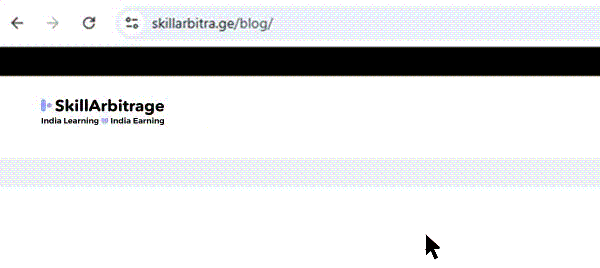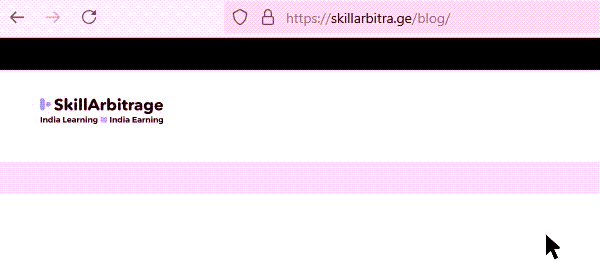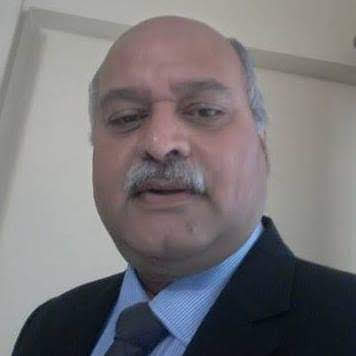
Q1. Can you share some key milestones and experiences from your impressive 28-year career in data engineering, data analytics, business intelligence, and artificial intelligence? What drove your passion for this field?
I have always been driven by the passion of harnessing the latest technologies for business outcomes. It involves knowing the business domain and also knowing the technology. Hence, I have always been in cutting edge technology adoption. Whether it is renewable energy derived from solar or bagasse-based co-generation ( in sugar plants) or in Data Warehousing, BI, Analytics and data science. And over the years I have been in pre-sales, sales, design and successful global delivery with measurable business outcomes.
Some of the key achievements and milestones I can recall are as follows.
- Sales and Execution of large Cogeneration projects in various sugar mills in Karnataka, Delhi and Andhra Pradesh and PLC based SCADA automation in Power Plants (1995-1999)
- Successful execution of Qatar’s first National Data Warehouse for their School Education under Supreme Education Council (2007-8)
- Launching the product called ‘ProClarity’ in India which was later acquired by Microsoft. (2003-2005)
- Successfully arresting the downward trend and turning around of one of the key accounts (from Australia) of TechMahindra to double its revenue and PAT in 3 years with exemplary outcomes for the client and in the process winning the first best Agile project competition in India (judged by E&Y) (2013-2016)
Q2. During your time at LTI as the Associate Director-Data Engineering, you managed digital transformation initiatives for clients across various industries. Could you highlight a particularly challenging project or an innovative solution that you’re proud of, and how it impacted the client’s business?
During 2017 to 2019, I had the opportunity to implement the end-to-end digital transformation for a commercial Insurance major company in Toronto, Canada. The project has various important challenges and the scope was as follows:
- DATA SCOPE
- Streamlining Data Intake and Transportation using the proprietary software of the client
- Establishing a DQ and Data Governance Framework
- Addition of New Data Sets for enhanced reporting and analytics
- Creating a comprehensive Data Dictionary
- DATA WAREHOUSING, REPORTING AND ANALYTICS, PRICING ( ALL AFTER MIGRATING TO CLOUD-ms AZURE)
- Designing / Creating a new DWH Ecosystem
- Creating New Reports and Dashboards
- Providing Analysis and Strategy for report rationalization
- End-user training
- Developing a pricing module in proprietary software for non-property products
- DOCUMENT MANAGEMENT AND eFILING
- Document Management solution build to enable modular documentation with predefined fields
- Migrate existing artifacts to eFile and automate the collection and retention processes
- ENHANCING THE PRICING MODULE FOR ACTUARIES
- DATA MINING
CHALLENGES WE FACED
- Client stakeholders were using outdated technologies which needed proper migration before retiring the technical debt.
- Data was of very poor quality
- Old System Architecture without any documentation resulted in a lot of reverse engineering to understand the logic
- No existing data governance in place
- Business users were very busy and so took time to train them and also get their user requirements in the correct context.
Q3. You’ve worked with global teams and leveraged agile and DevOps methodologies. Can you elaborate on the benefits and challenges of implementing these methodologies in a global delivery model, especially in the context of data engineering and analytics projects?
Agile and DevOps (and now MLOps) when they started, were new things to many organizations and teams. Early adopters did gain advantage but also had a long and painful learning curve. I was a part of many new initiatives and found that though I personally was certified and knowledgeable but to implement it across the organization was a tremendous ordeal. Right from educating the stakeholders to managing expectations it was a huge exercise in Change Management. Some people could not cope with it at times. But eventually this change is well accepted and has matured with many ready to use tools and best practices guides and mentors. Benefits to the organizations accrue in terms of ability to be more flexible and responding to rapid changes in the market and better management of risks of failure in delivery.
Q4. Your extensive list of certifications, including PMP, BB Six Sigma, ITIL, Scrum Master, and SAFe Agilist, reflects a commitment to excellence. How have these certifications influenced your approach to managing complex projects and teams?
As mentioned in the first question I always had a passion for new age and cutting-edge technologies. But along with these, one has to also master the latest developments in delivery methodology such as PMP, SCM, SAFe. Also, we have moved to looking at the entire underlying business process for improvement so BB Six Sigma becomes very useful. So overall my quest for excellence in organization has led me to ensure that these certifications come in handy in practical situations. I have benefited from them as much as my organizations.
Q5. As the Deputy Head of the Analytics and Information Management Practice at LTI, you oversaw strategy, operations, and process improvement. What strategies did you employ to drive innovation within the practice, and what role did thought leadership play in these efforts?
I always believed and practiced that innovation cannot be forced but an environment for fostering innovation should be the prime focus. In keeping with this belief, I followed two strategies as follows
- The KISS Principle (Keep It Straight and Simple)
- If you want your team to build a ship do not teach them how to build the ship but create in them the love for the sea and they will build the ship themselves.
Because of this I ensured that I empowered my team and removed any roadblocks and facilitated the growth of the team and challenged the status quo.
Q6. Throughout your career, you’ve held various leadership roles in different organizations. Can you share some key leadership principles that have guided you in managing teams and delivering successful projects?
From my experience and knowledge of Agile delivery, I try to be as much as a servant leader as possible instead of a formal leader. Secondly, treating the team as human beings first rather than a ladder to rise in the corporate circles is important. This means also at times shielding the team from harsh management at times and toxic environment at times.
Similarly, clients being transparent and managing expectations is best for mutual benefit and trust.
Q7. You mentioned introducing processes like automation, RCA, and Artificial Intelligence. Could you provide an example of how these technologies were applied to improve project delivery or client outcomes?
Automation: It helps in automating any repetitive jobs and saves time and human error. Also saves costs of human resources deployed for such tasks.
Example: PLC based SCADA automation applied at a major cement manufacturer allowed switching from grid to captive power at times of power cuts and this avoided any break in production. Also, it saved costs when it was optimized to use the cheapest source of power. Electricity is a major cost component in the manufacture of cement.
RCA: Root Cause Analysis helps in reaching the root level from where the error has started propagating. Correcting it at its source costs less and saves more time and effort which could be needed at a later stage. Various techniques such as fish bone, etc are well known for this.
Example: RCA applied to control the attrition in an IT company helped in realigning the HR policies to better retention of talent
Artificial Intelligence: AI is a relatively new field with four stages of progressive maturity. Descriptive Analytics, Diagnostic Analytics, Predictive Analytics and Prescriptive Analytics. Applying AI has become a necessity for thriving in a competitive world.
Example: For Changi Airport in Singapore, AI could predict the inbound passengers in real time and thus extra counters could be planned and started for customer convenience and better customer experience making Changi Airport the best in the world.
Q8. In your role as Vice President at Interactive Logicware Ltd, you worked on OPMS, an operating system for problem-solving. Could you tell us more about OPMS and how it aids in solving complex problems, as well as any real-world success stories from its application?
OPMS is the most unique piece of software application with which I have been ever associated and I was also the one who wrote the algorithm for it. It has the following USPs. The product has been tested as a POC in various organizations such as ACC Cements, Bank of Maharashtra, ITC, Indian Organics ltd, SBI, etc. Most of these POCs were conducted in early 2000. The product IP is with me and it has not been launched commercially (will be doing it so in near future subject getting an Angle Investor). In the meantime any organization or interested party ( angel investor) can write to me at [email protected] and I can conduct a workshop and demo spanning one day.
UNIQUE FEATURES OF THE PRODUCT
- Can be used by a person of age 10 to 80 years and it can be also be used by an individual or in groups / team in any domain.
- Based on principles of Interactive Management
- Most unique software application for problem solving, innovation, creative thinking and consensus building. It can solve any problem by creating a concrete roadmap for solution and its execution.
- Creates concrete action plan based on tacit and implicit knowledge and wisdom of each team member and converts into explicit actionable road map
- Allows organizations to build self-dependent teams
- Has 3 modules – Idea Generation, Idea Engineering and Idea Execution and with a feedback loop like a neural network
- A vehicle to explore and exploit the vast latent knowledge and intuitive power of people in the organization/.
- Helps create wisdom from existing knowledge – integrates knowledge of people into consensus action planning.
- Moves from ‘Rationality’ and ‘Intuition’ as disparate aspects of issues to “Rationality+Intuition” as an integrated whole in every issue taken up for consideration in the organization
- It encapsulates a process which when followed created the dashboard shown above.
- Many other benefits which can be explained with demo during the workshop

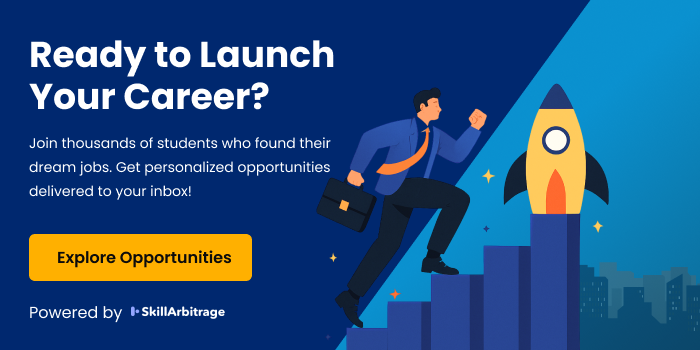
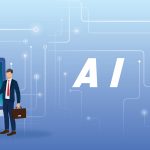


 Allow notifications
Allow notifications